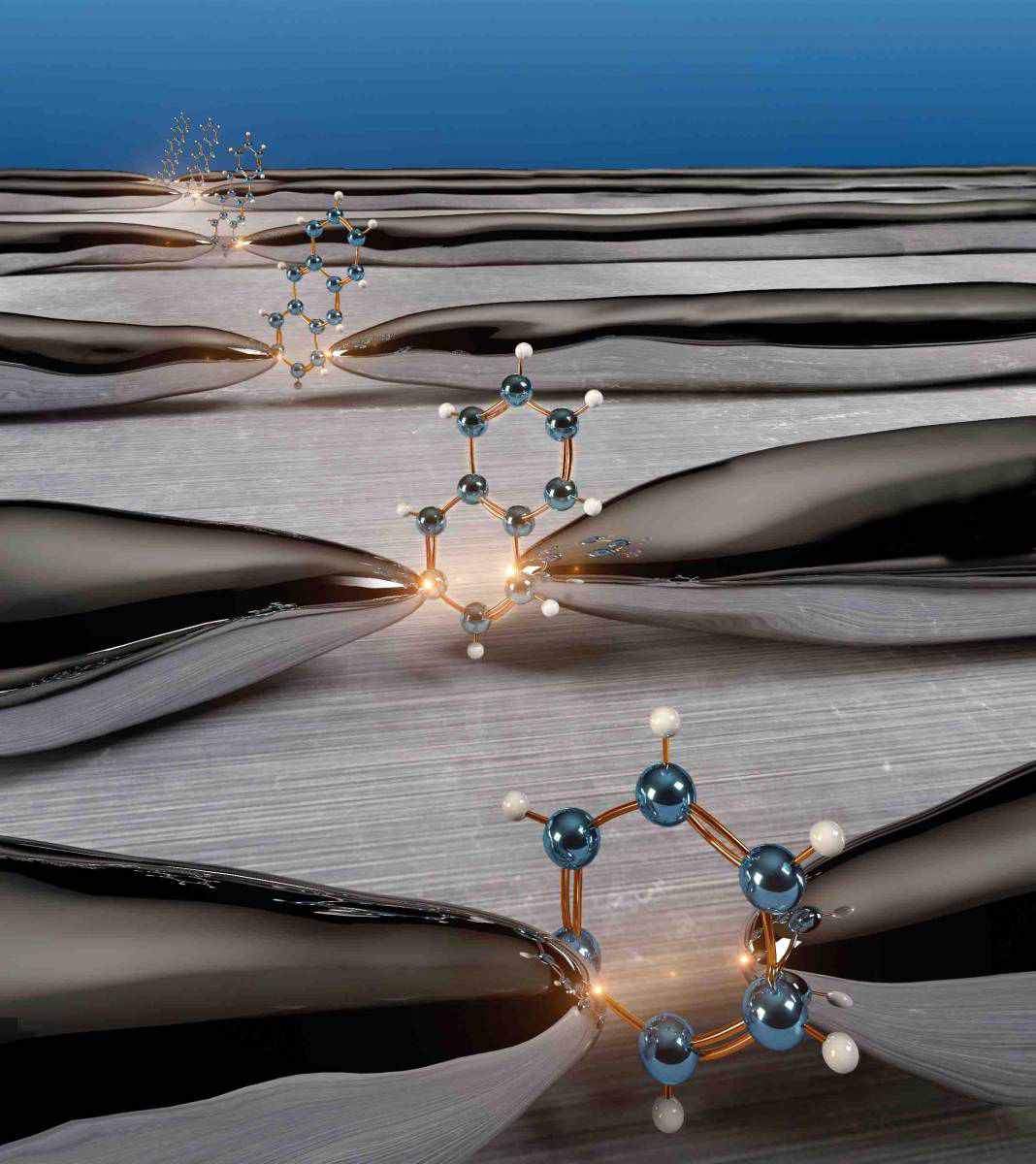Are you a journalist? Please sign up here for our press releases
Subscribe to our monthly newsletter:

Molecular junctions made of single molecules strung between two electric wires are already part of the world of nano- and even smaller electronics. But how well can a molecule conduct electricity? Recent research led by Dr. Tamar Yelin in the group of Dr. Oren Tal in the Chemical Physics Department of the Weizmann Institute of Science explored the upper limit for the electric conductance of a molecule embedded in an electric circuit. The results of this research were published in Nature Materials.
When the molecule is connected to the circuit, it forms a molecular junction: An individual molecule is suspended like a bridge between two metal wires, which serve as electrodes. Usually, the molecule is attached to the electrodes with chemical side groups, which partially isolate the molecule from the electrodes to maintain the molecule’s properties. However, such spacers also suppress the flow of electrons. Tal and his group found a way to avoid the use of side groups, instead creating a direct bond between the molecule and the metal electrodes, thus obtaining highly conducting molecular junctions.
To form the molecular junction, they cooled a thin metal wire – thin as a human hair, to four degrees above absolute zero (-269˚C). They stretched this wire until its center thinned to the diameter of a single atom; and then they kept thinning, finally breaking the wire and leaving a molecule-sized space between two segments of wire with atom-sharp tips. When a few molecules were released into the vacuum chamber, sooner or later a molecule would be trapped between the two sharp tips, thus forming a molecular junction.
An individual molecule is suspended like a bridge between two metal wires
“The interface between molecules and metals can exhibit new properties,” says Tal. “For example, last year we introduced oxygen molecules between two nickel electrodes. We found that this junction behaves as an atomic-scale spin filter that allows the passage of only certain electrons – those with one particular spin – with more than 98% selectivity. Neither substance, on its own, is capable of this behavior; yet the interface between nickel and oxygen generates remarkable spin-filtering, which is useful for spin-based electronics”.
In the present study, to achieve high conductance across molecular junctions, the researchers used a series of molecules composed of different numbers of carbon rings connected in a row, in which some of the electrons are freely spread over the entire molecule. The molecules were attached between the two electrodes in such a way that the electrons could easily move between the molecule and the metal.
The group found that the conductance across molecular junctions is characterized by two competing trends. For longer molecules, the spacing between their energy levels is reduced, and the levels align better with those of the metal, promoting better electronic conductance. But in longer molecules the electrons also have more room to move around, so the probability that an electron will spend time specifically at the metal-molecule interface is reduced. This trend acts to suppress the conductance.

The research was carried out in collaboration with the group of Prof. Collin Nuckolls from the US, who synthesized some of the molecules; and the group of Prof. Ferdinand Evers from Germany, who conducted model calculations. The group began their experiments with molecules connected to silver electrodes. They found that in a junction made of a relatively short molecule, the first trend is the dominant one; and thus the conductance rises as the molecules get longer. But beyond a molecular length of three carbon rings the two trends exactly cancel each other out, leading to “conductance saturation” and thus setting an upper conductance limit.
When the researchers replaced the silver electrodes with platinum ones, the electronic system of the molecule and the metal efficiently merged; the molecule behaved as though it was an extension of the metal. In this case the upper limit for conductance was found to match that of the metal, regardless of the molecule’s length.
“This is the first time that an upper limit has been shown for conductance in a molecular junction,” says Tal. “The character of the interfaces between the metal electrodes and the molecules dictates how electrons will flow across the molecule. These molecular junctions represent the lower boundary of miniaturization for electronics; and if we understand the basic principles underlying conduction on the scale of a single molecule, we will be able to better control them for use in nano-scale electronic devices.”
Dr. Oren Tal"s research is supported by the Mary and Tom Beck Canadian Center for Alternative Energy Research and Dana and Yossie Hollander, Israel. Dr. Tal is the incumbent of the Alvin and Gertrude Levine Career Development Chair.